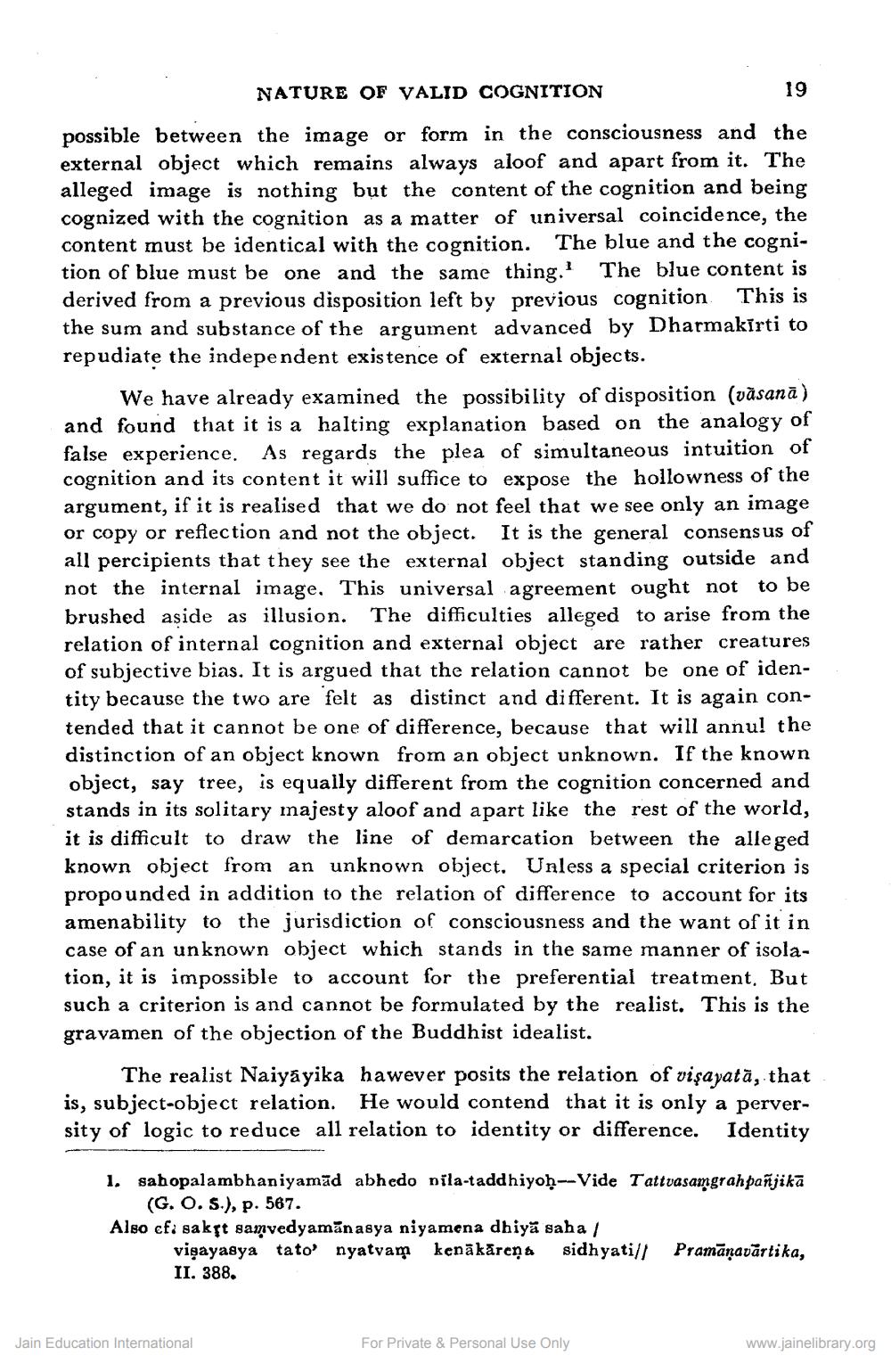________________
NATURE OF VALID COGNITION
19
possible between the image or form in the consciousness and the external object which remains always aloof and apart from it. The alleged image is nothing but the content of the cognition and being cognized with the cognition as a matter of universal coincidence, the content must be identical with the cognition. The blue and the cognition of blue must be one and the same thing. The blue content is derived from a previous disposition left by previous cognition. This is the sum and substance of the argument advanced by Dharmakirti to repudiate the independent existence of external objects.
We have already examined the possibility of disposition (vāsanā) and found that it is a halting explanation based on the analogy of false experience. As regards the plea of simultaneous intuition of cognition and its content it will suffice to expose the hollowness of the argument, if it is realised that we do not feel that we see only an image or copy or reflection and not the object. It is the general consensus of all percipients that they see the external object standing outside and not the internal image. This universal agreement ought not to be brushed aside as illusion. The difficulties alleged to arise from the relation of internal cognition and external object are rather creatures of subjective bias. It is argued that the relation cannot be one of identity because the two are felt as distinct and different. It is again contended that it cannot be one of difference, because that will annu! the distinction of an object known from an object unknown. If the known object, say tree, is equally different from the cognition concerned and stands in its solitary majesty aloof and apart like the rest of the world, it is difficult to draw the line of demarcation between the alleged known object from an unknown object. Unless a special criterion is propounded in addition to the relation of difference to account for its amenability to the jurisdiction of consciousness and the want of it in case of an unknown object which stands in the same manner of isolation, it is impossible to account for the preferential treatment. But such a criterion is and cannot be formulated by the realist. This is the gravamen of the objection of the Buddhist idealist.
The realist Naiyayika hawever posits the relation of vişajată, that is, subject-object relation. He would contend that it is only a perversity of logic to reduce all relation to identity or difference. Identity
1. sahopalambhaniyamad abhedo nila-taddhiyoḥ--Vide Tattvasamgrahpañjikā (G. O. S.), p. 567.
Also cf. sakit samvedyamānasya niyamena dhiya saha /
visayasya tato' nyatvam kenākāreņa sidhyati// Pramanavārtika,
II. 388.
Jain Education International
For Private & Personal Use Only
www.jainelibrary.org




